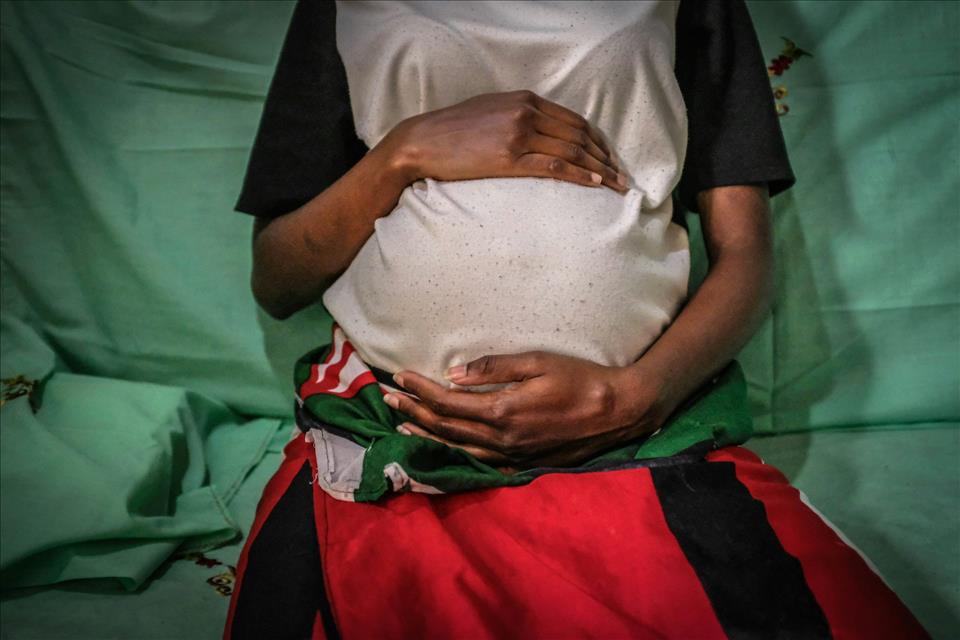
Pregnant Teens In Kenya's Low-Income Areas Avoid Health Care Because Of Fear And Stigma
These were the words of Wanjiru (not her real name), a 17-year-old adolescent mother from an informal settlement in Nairobi. Her story reflects the deep fear and stigma that many pregnant adolescents experience when navigating access to antenatal care services. Her case is typical of a broader problem, where judgmental attitudes from health providers and community stigma discourage young girls from accessing essential antenatal care.
Globally, the maternal mortality rate for pregnant adolescents aged 15-19 years is much higher than that of young women aged 20-24 years. Adolescents also face much higher risks of complications in childbirth, putting both themselves and their babies in danger. In addition, babies born to adolescent mothers are more prone to neonatal conditions, low birth weight, and preterm birth.
Early and consistent antenatal care can help reduce these risks by facilitating the early detection of danger signs, and enabling opportunities to mitigate complications. The World Health Organization recommends eight antenatal visits, starting in the first three months.
Read more: What's in the way of quality antenatal care for women in West and Central Africa
For pregnant adolescents in Kenya's informal settlements, however, healthcare facilities may feel more like hostile spaces than places for safety and support.
As sexual and reproductive health researchers, we conducted a qualitative study in 2022 in an urban informal settlement in Nairobi, the capital city, exploring adolescent girls' experiences seeking antenatal care. We interviewed 22 adolescent mothers (two were pregnant at the time of the interview), as well as 10 parents or guardians, and three healthcare providers.
Our study found that stigma, shame, fear and harsh treatment by healthcare providers led some of these young girls to avoid antenatal care completely or to delay going for care until the last three months of pregnancy.
The adolescent pregnancy rate remains high in Kenya, particularly in low-income urban areas. The Kenya Demographic and Health Survey 2022 puts the adolescent birth rate, that is, the number of live births per 1,000 girls aged 15-19 years, at 73 per 1,000. In Nairobi's informal settlements of Korogocho and Viwandani, a survey found that about 116 per 1,000 girls aged 15-19 had given birth.
Reducing stigma through community engagement, providing youth-friendly and confidential health services, and increasing community awareness about antenatal care are essential to support pregnant adolescents.
Late antenatal careOf the 20 adolescent mothers interviewed, 12 started going for antenatal care during the second trimester and one during the third trimester. Health providers said this was a common pattern.
The reasons included:
- girls not recognising the early signs of pregnancy
fear of the consequences of disclosing their pregnancy, such as being beaten, forced to leave school, or abandoned by their partners a lack of knowledge about antenatal care being needed
unsuccessful attempts to terminate the pregnancy fear of being stigmatised, even though adolescent pregnancy is a common occurrence in the study setting
fear of being judged and treated harshly by health providers.
As one adolescent mother put it:
However, in cases where the girls received support from their parents, guardians, or partners, the outcomes were different. Far from the stereotype of absent fathers, some male partners supported their partners in antenatal care visits.
Treatment in healthcare facilitiesIn our findings, most girls who visited the clinic were treated well, unlike the judgment they expected. However, some girls reported poor treatment from healthcare providers, which led them to dread clinic visits.
Lack of privacy and confidentiality was also a key factor for the adolescent mothers.
What needs to be doneThe findings from our study suggest that multiple layers of intervention are needed.
Addressing this will require:
Community engagement to reduce stigma: Families, schools and churches must create environments where pregnant girls feel supported. Parents and male partners can also be included in the outreach. Youth-friendly health services: Clinics need to train staff to provide respectful, non-judgmental care and ensure confidentiality for adolescent girls.Antenatal care knowledge dissemination: There needs to be more community awareness about antenatal care, when and where to seek it in case of pregnancy.

Legal Disclaimer:
MENAFN provides the
information “as is” without warranty of any kind. We do not accept
any responsibility or liability for the accuracy, content, images,
videos, licenses, completeness, legality, or reliability of the information
contained in this article. If you have any complaints or copyright
issues related to this article, kindly contact the provider above.
Most popular stories
Market Research
- Thinkmarkets Adds Synthetic Indices To Its Product Offering
- Ethereum Startup Agoralend Opens Fresh Fundraise After Oversubscribed $300,000 Round.
- KOR Closes Series B Funding To Accelerate Global Growth
- Wise Wolves Corporation Launches Unified Brand To Power The Next Era Of Cross-Border Finance
- Lombard And Story Partner To Revolutionize Creator Economy Via Bitcoin-Backed Infrastructure
- FBS AI Assistant Helps Traders Skip Market Noise And Focus On Strategy




















Comments
No comment